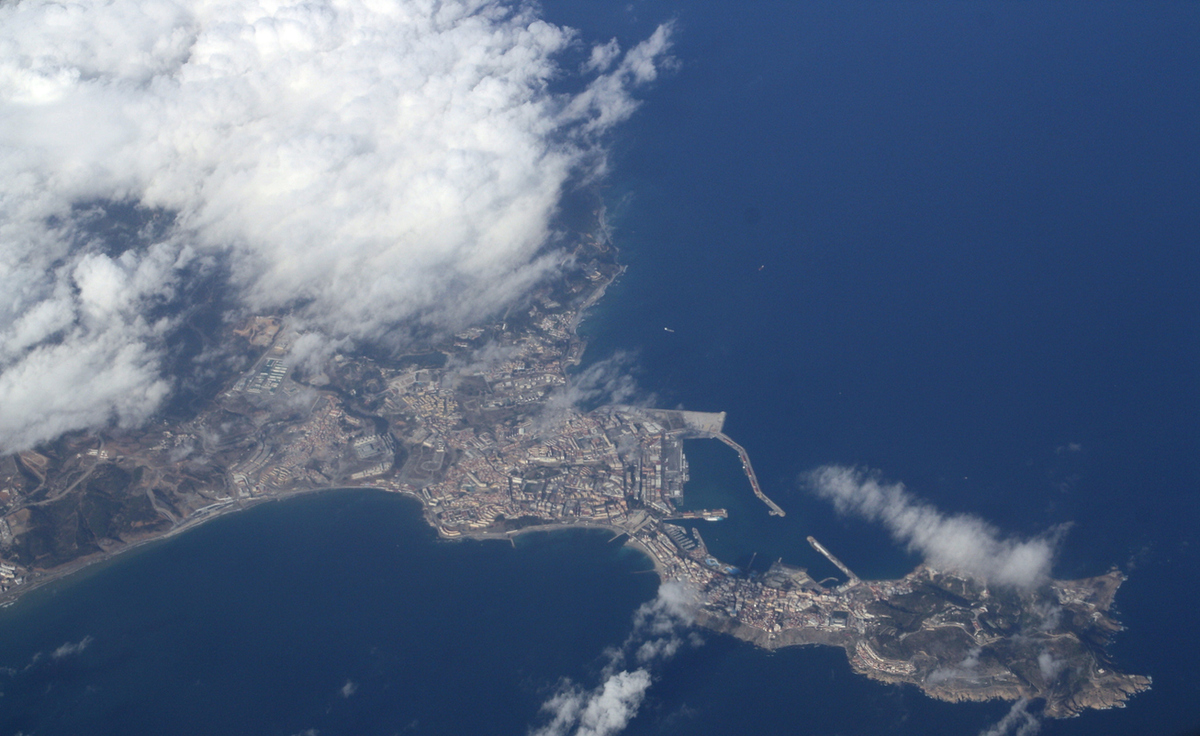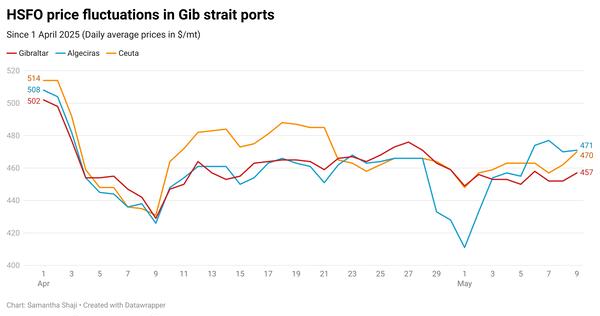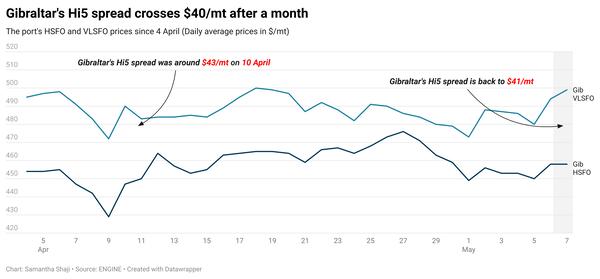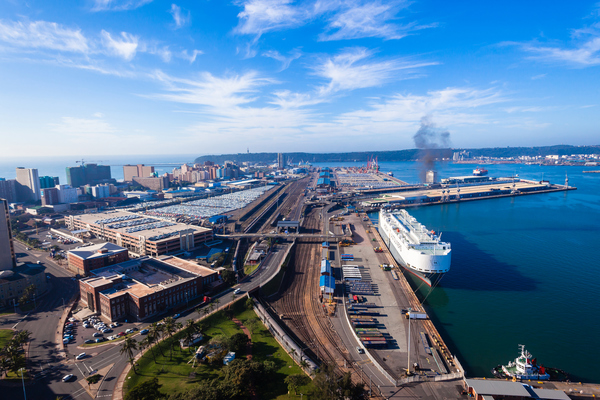Europe & Africa Market Update 6 May 2025
European and African bunker benchmarks have climbed, tracking Brent’s upward movement, and Gibraltar Strait ports are now fully operational.
 IMAGE: Aerial view of the Port of Ceuta, Spain. Getty Images
IMAGE: Aerial view of the Port of Ceuta, Spain. Getty Images
Changes on the day to 09.00 GMT today:
- VLSFO up in Gibraltar ($10/mt), Durban ($9/mt) and Rotterdam ($2/mt)
- LSMGO prices up in Gibraltar ($19/mt) and Rotterdam ($4/mt)
- HSFO prices up in Durban ($7/mt), Rotterdam ($3/mt) and Gibraltar ($1/mt)
Conventional bunker fuel prices have inched up in Rotterdam, Gibraltar and Durban, after yesterday’s stumble.
Rotterdam’s prices have gained just $2-4/mt, and its Hi5 spread has narrowed over the past session to $33/mt. Gibraltar’s Hi5 spread has widened by $9/mt to $35/mt.
Prices in the Mediterranean port of Gibraltar have recorded the largest gains in the past session, with its VLSFO and LSMGO prices up by $10/mt and $9/mt, respectively.
All the ports in the Gibraltar Strait are fully functional now, after days of bad weather, according to MH Bland. Algeciras and Ceuta face no congestion. There continues to be a backlog of vessel to bunker in Gibraltar, however, as barge availability is under pressure. The backlog stands at 17 vessels today, down from 21 yesterday, the port agent noted.
Brent
The front-month ICE Brent contract has moved $1.74/bbl higher on the day, to trade at $61.72/bbl at 09.00 GMT today.
Upward pressure:
Oil demand in the US, the world’s largest oil consumer, has shown some resilience in the past week, amid the ongoing US-China tariff saga. This has provided some support to oil prices.
Brent crude’s price felt some upward pressure after commercial US crude oil inventories declined by 2.7 million bbls to touch 440 million bbls for the week ending on 25 April, according to data from the US Energy Information Administration (EIA).
A drop in US crude inventories could signal strengthening oil demand and offer some support to Brent’s price, analysts say. Market participants are now eyeing the latest EIA data, due for release tomorrow.
Traders are also closely watching the upcoming US Federal Reserve's Open Market Committee (FOMC) meeting, where policymakers are expected to discuss potential interest rate cuts in the coming months. A reduction in rates could weaken the US dollar, making dollar-denominated commodities like oil more attractive for holders of other currencies.
“Heading into the FOMC, traders were on a risk diet, not a buffet,” SPI Asset Management managing partner Stephen Innes said.
Downward pressure:
Brent crude’s price gains were capped as markets reacted to a larger-than-expected increase in output from OPEC+ producers.
The Saudi Arabia-led oil producers group surprised the market in April by tripling its planned output hike to 411,000 b/d for May, and on Saturday it agreed to extend that increase through June.
This is the second month in a row that they plan to expedite the unwinding of their joint 2.2 million b/d output cuts. “That means over 37% of the 2.2mb/d in production gains will have come in the space of two months,” ANZ Bank senior commodity strategist Daniel Hynes remarked.
Subsequently, global investment bank Morgan Stanley cut its oil price forecasts for the remainder of the year. The bank now sees ICE Brent to trade around $62.50/bbl in the third and fourth quarters of this year, down by $5/bbl from its previous forecast, Bloomberg reports.
By Samantha Shaji and Aparupa Mazumder
Please get in touch with comments or additional info to news@engine.online

Contact our Experts
With 50+ traders in 12 offices around the world, our team is available 24/7 to support you in your energy procurement needs.




